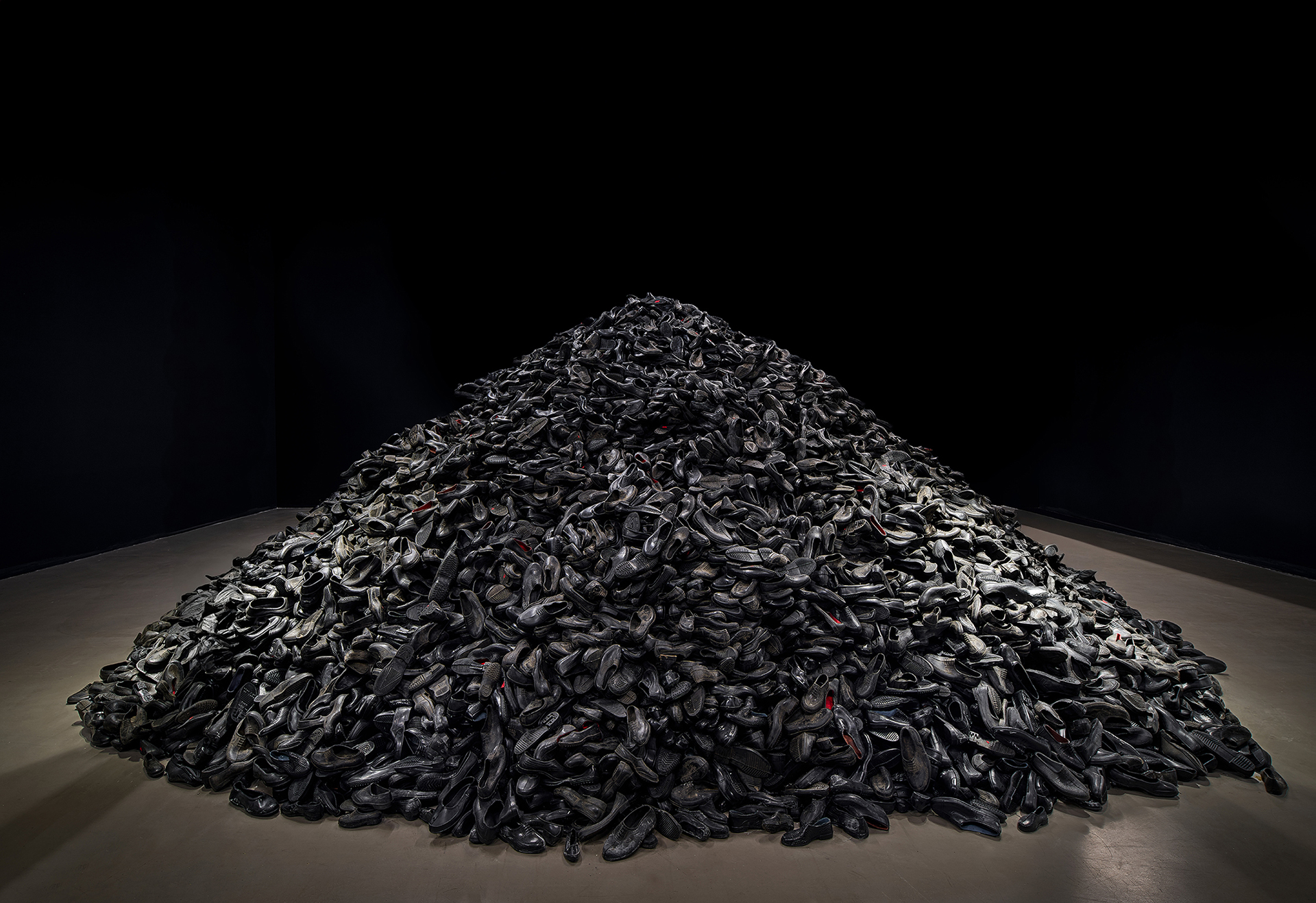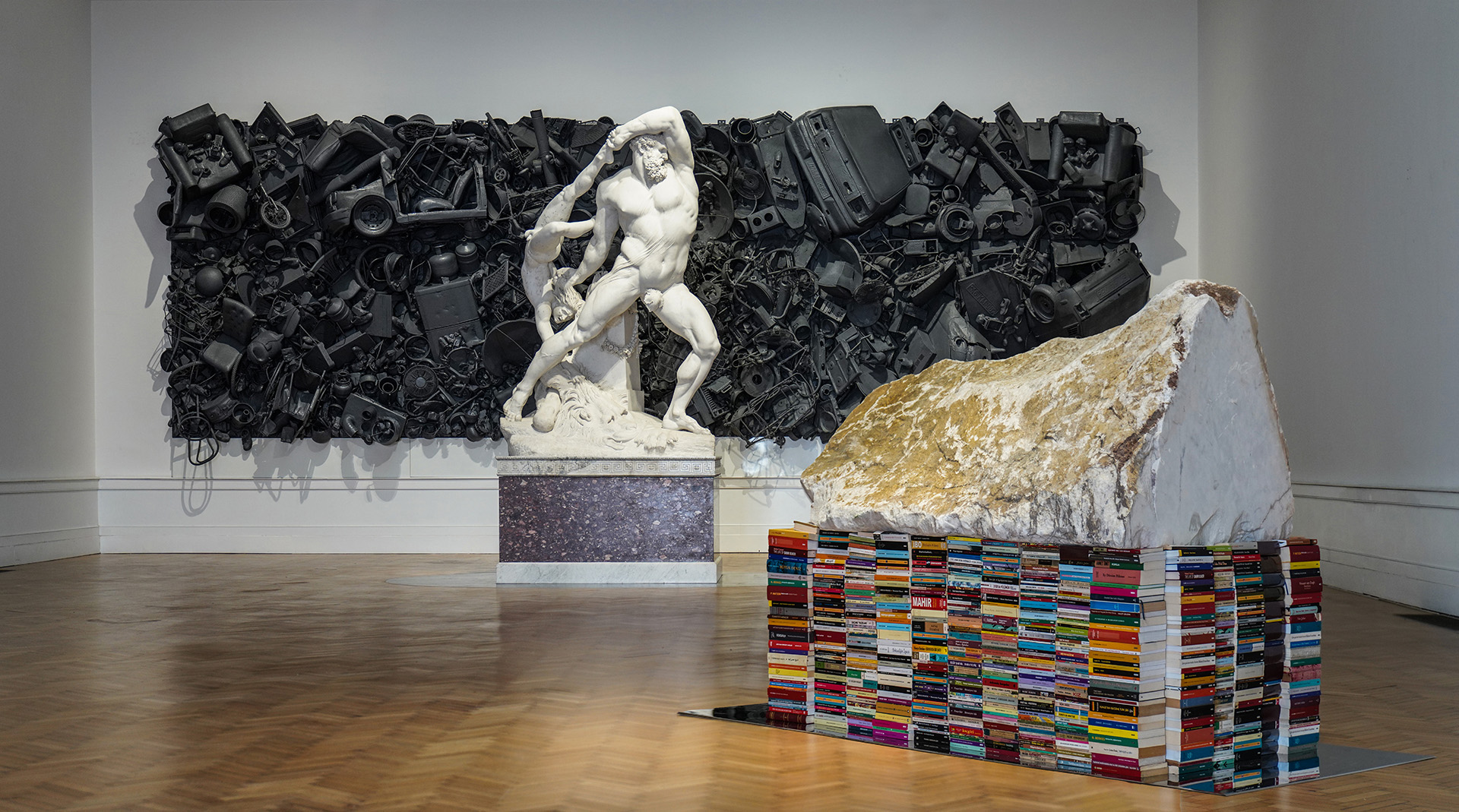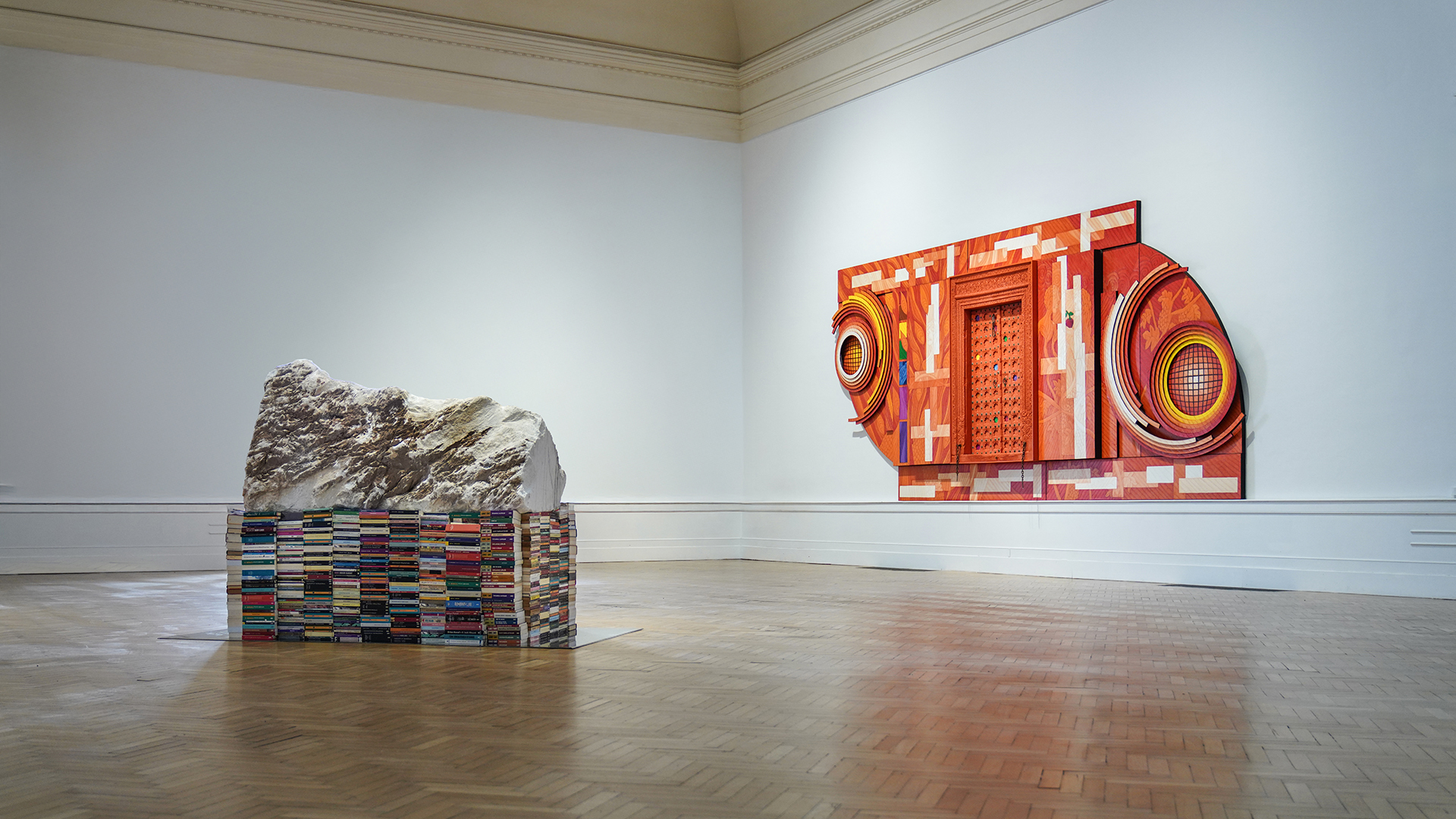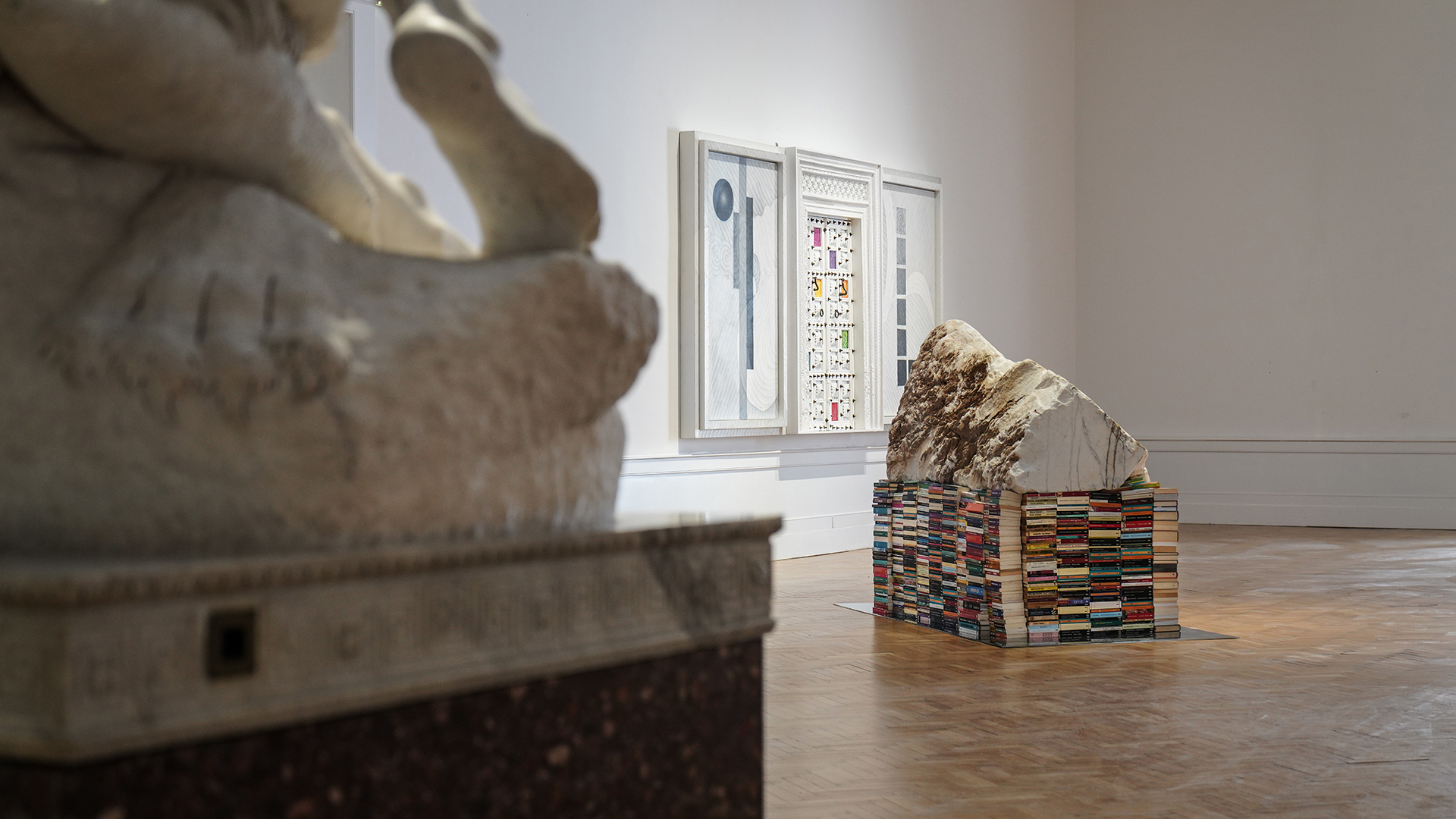Ahmet Güneştekin – the visual ritual of absence
A powerful visual language narrates Kurdish identity and collective memory through deeply symbolic, politically charged installations
By Davide Oliviero, 30 June 2025
At the National Gallery, a symbolic epiphany between myth, material, and plastic dissent
Ahmet Güneştekin, a Turkish artist of Kurdish origin, takes over the spaces of the National Gallery of Modern and Contemporary Art of Rome with a gesture that is both symbolically and conceptually charged. YOKTUNUZ—Never There — is not an exhibition, but a poetic and layered intervention that galvanises the museum space as an energetic, ritualistic, and political field. His works don’t settle in—they break in. They don’t decorate—they wound. Güneştekin doesn’t hint—he cuts deep. Like a surgeon-artist, he opens up the surface of the visible to expose the raw flesh of absence beneath.
The exhibition space of GNAM isn’t just a container—it’s a reactive body, an ideological topography where the artist implants his own imagery: a blend of Anatolian myths, Mesopotamian suggestions, Mediterranean echoes, and timeless icons made matter and form. Here, myth isn’t a nostalgic echo, but a distorting lens through which collective history is revealed as a layered wound. Güneştekin rejects the concepts of identity as a given and of art as illustration. He works through accumulation, interference, syncretism: each object is an organism, each sculpture a psychic totem, each surface a semiotic reservoir, dense with meaning and ambiguity.
 The installation that gives the exhibition its title is set in dialogue with Canova’s Hercules and Lichas—and this encounter alone encapsulates the whole strategy: classicism and trauma, form and obsession, marble and metal, Western mythology and uprooted sacredness. Güneştekin’s work stands beside the neoclassical master’s not as a contrast, but as a collision. Canova’s muscular beauty is disrupted, subjected to a symbolic disturbance that dismantles/rips it from its foundational rhetoric. The clash isn’t formal—it’s ontological. Here, art doesn’t comfort: it exposes.
The installation that gives the exhibition its title is set in dialogue with Canova’s Hercules and Lichas—and this encounter alone encapsulates the whole strategy: classicism and trauma, form and obsession, marble and metal, Western mythology and uprooted sacredness. Güneştekin’s work stands beside the neoclassical master’s not as a contrast, but as a collision. Canova’s muscular beauty is disrupted, subjected to a symbolic disturbance that dismantles/rips it from its foundational rhetoric. The clash isn’t formal—it’s ontological. Here, art doesn’t comfort: it exposes.
Güneştekin works with materials that resist refinement: iron, copper, glass, combusted pigments, sharp-edged and oxidized surfaces. His pieces become at once talisman and monument, relic and detonator. Each object is built to be seen and to leave a mark on the gaze. But it’s not about aesthetic seduction: it’s about capture. Art here is a trap of memory, a mute oracle of what can no longer be said. There is no representation, only evocation. No explanation, only enchantment.
The exhibition unfolds like a crossing. Visitors don’t simply observe—they step into a mental landscape, a visionary atlas that doesn’t aim to inform, but to infect. The forms are excessive, overdetermined, dense. They aren’t meant to be explained: they are meant to be inhabited. Image becomes mental space. Matter speaks. This is not an artist who paints or sculpts—it’s a creator of fragmentary cosmologies, a visual alchemist who turns trauma into object, history into geometry, memory into sacred ornament.
 Güneştekin doesn’t operate within contemporary art—he moves through it like a ritual body waiting to be awakened. His practice is an exercise in symbolic archaeology, a challenge to the logic of the ‘museified’ present. GNAM—the secular temple of Italian art—opens its doors to an artist who quietly deconstructs its foundations: every room he touches becomes destabilized, contaminated, unmoored/unloosened. The permanent collection is no longer a background, it is an antagonist/rival. Modern art, with its linear, rational narrative, is set against a sacred grammar that doesn’t ask for permission but demands presence.
Güneştekin doesn’t operate within contemporary art—he moves through it like a ritual body waiting to be awakened. His practice is an exercise in symbolic archaeology, a challenge to the logic of the ‘museified’ present. GNAM—the secular temple of Italian art—opens its doors to an artist who quietly deconstructs its foundations: every room he touches becomes destabilized, contaminated, unmoored/unloosened. The permanent collection is no longer a background, it is an antagonist/rival. Modern art, with its linear, rational narrative, is set against a sacred grammar that doesn’t ask for permission but demands presence.
Curators Sergio Risaliti and Paola Marino don’t simply organize, but orchestrate: they devise a pathway of fractures, tensions, and suspensions. The dialogue isn’t symmetrical; it’s oblique, sharp, irregular. Each work is a threshold. Each threshold, an enigma. The museum becomes a labyrinth of perception, a theater of the invisible, where each visual element carries cultural layering that goes beyond the official narrative. It is the return of the sacred stripped of religion, the ritual without faith, the image as a gateway to the collective subconsciousness.
There’s no stated ideology, but the political stance is unmistakable: every object on display is also a declaration of dissent. The absence suggested by the title is not just biographical or ethnic: it’s ontological. Never There speaks directly to the viewers: You didn’t see. You didn’t listen. You didn’t protect. It’s an accusation—but also a call to awaken. In this view, art is never peaceful. It is always charged, always exposed to an excess of meaning that overwhelms it. And that’s precisely why it’s so urgent.
 Güneştekin crafts a ‘world-work,’ a total art that accommodates memory and form, mourning and ornament, sacredness and spectacle. He’s neither a painter nor a sculptor: he’s a visual liturgist, a symbolic architect, the director of a theatre of loss. His works don’t document trauma: they stage it. And in doing so, they transmute it. This isn’t the melancholy of absence: it’s its plastic apotheosis. Here, absence takes form. And it demands to be seen.
Güneştekin crafts a ‘world-work,’ a total art that accommodates memory and form, mourning and ornament, sacredness and spectacle. He’s neither a painter nor a sculptor: he’s a visual liturgist, a symbolic architect, the director of a theatre of loss. His works don’t document trauma: they stage it. And in doing so, they transmute it. This isn’t the melancholy of absence: it’s its plastic apotheosis. Here, absence takes form. And it demands to be seen.


